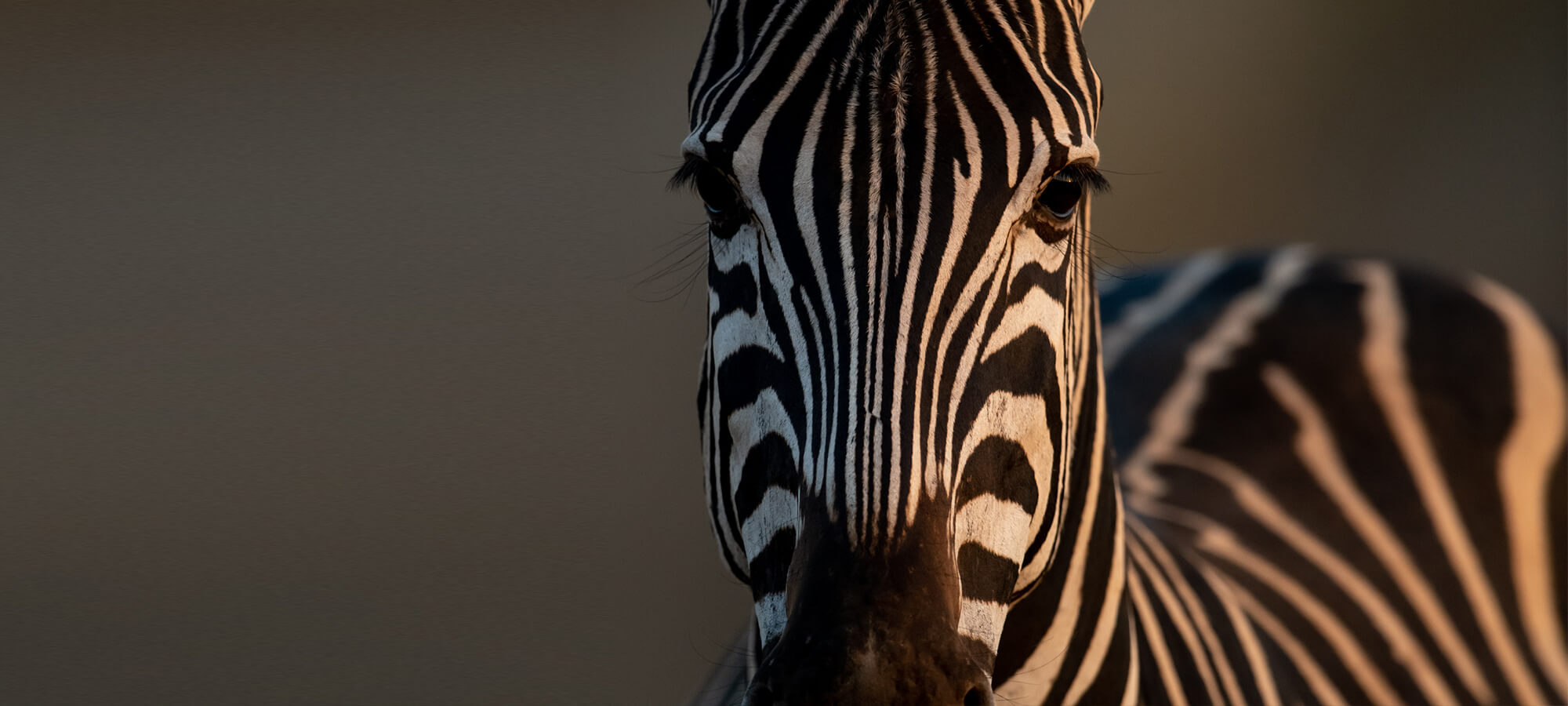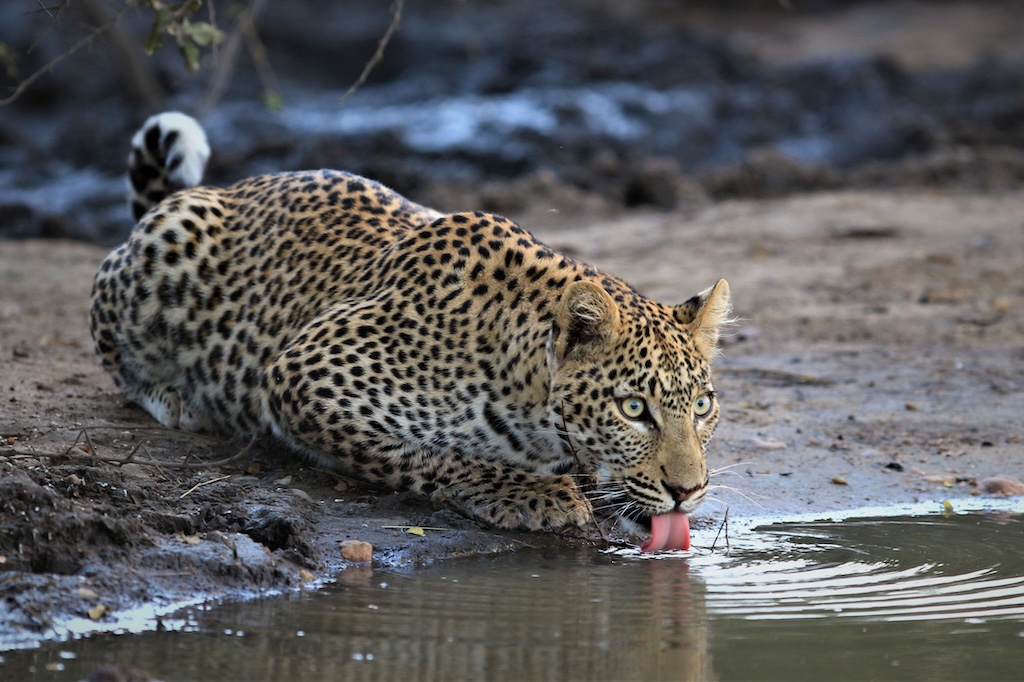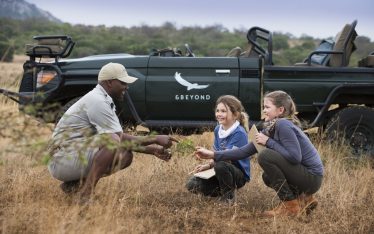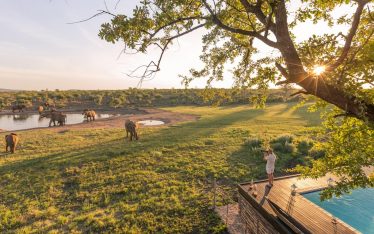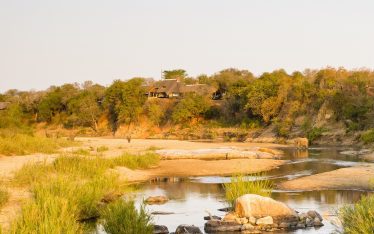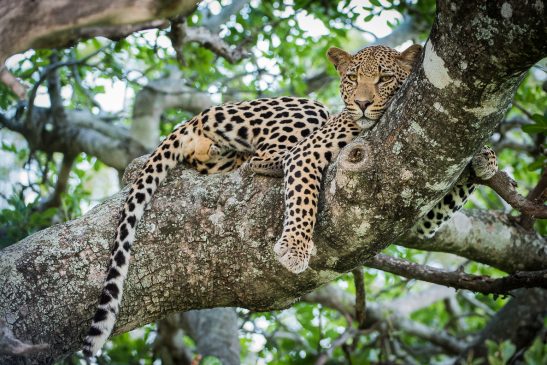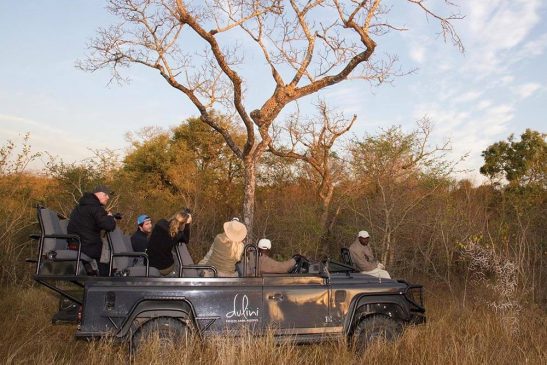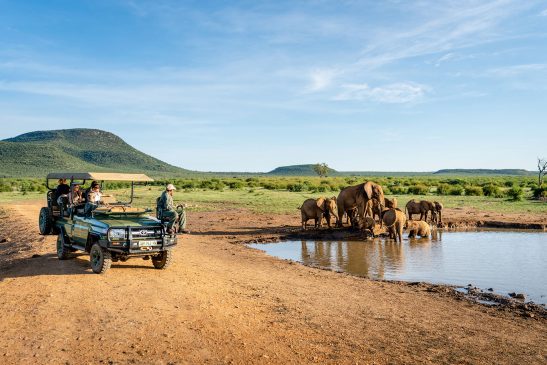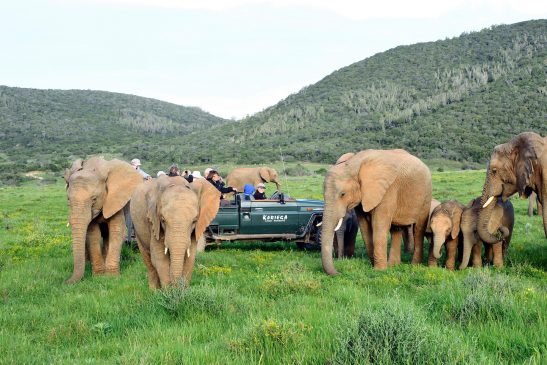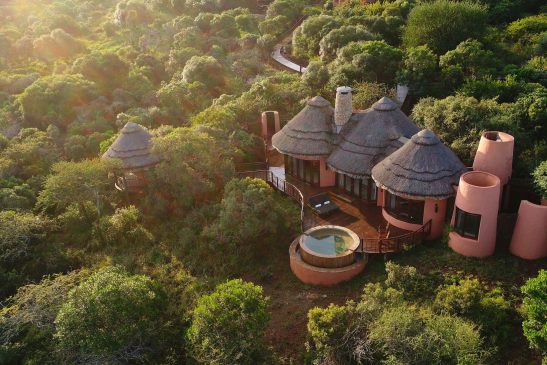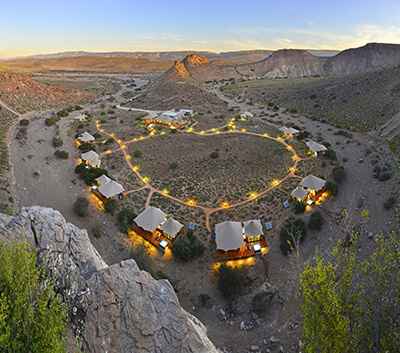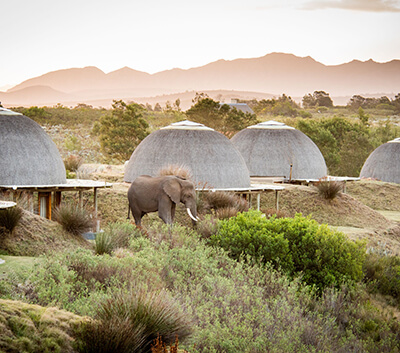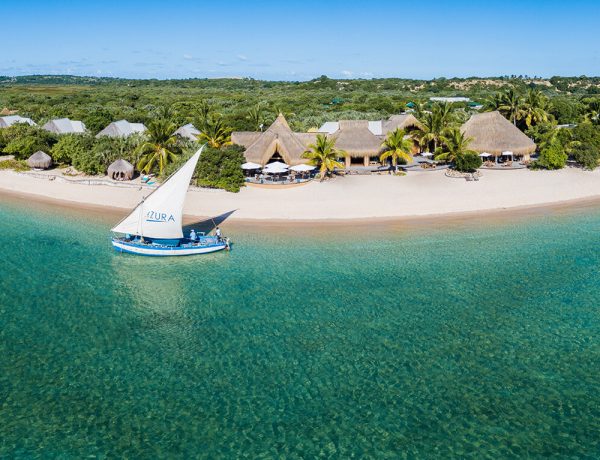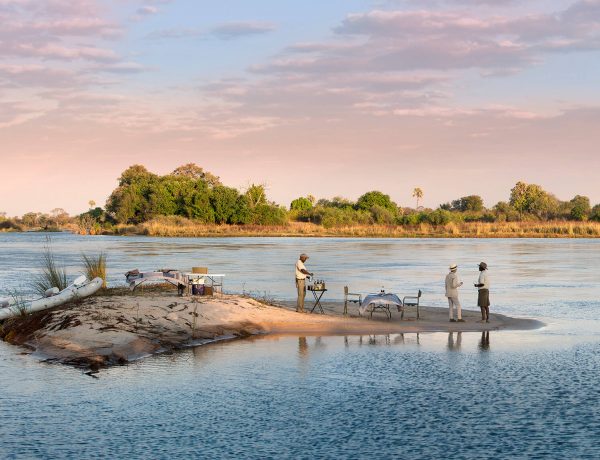Ranking at the top of South Africa’s best safari destinations, both the Kruger National Park and the Sabi Sands Game Reserve are world-renowned for their incredible wildlife and Big Five safaris. However, deciding which to visit isn’t an easy choice. While these areas share a border and many similarities, they offer quite different safari experiences shaped by their ownership, size, access rules, and wildlife management. Understanding these key differences will help you choose the best destination based on your interests, budget, and type of safari adventure you seek.
Though Kruger and Sabi Sands share an unfenced 50-kilometre border, allowing animals to roam freely between the two, the guest experience differs dramatically due to strict travel and access regulations. Visitors cannot freely move between the two areas, as separate rules and regulations govern each. This article outlines the major differences between Kruger National Park (public sector) and Sabi Sands Game Reserve (private sector), and also highlights how the Greater Kruger private reserves compare to Sabi Sands.
Private vs Public Ownership and Access
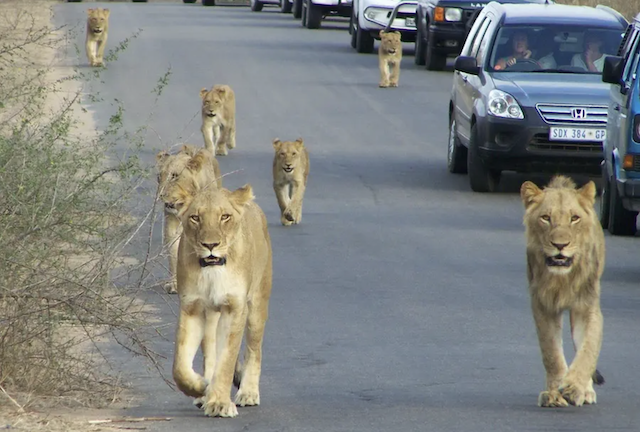
One of the most significant differences between the Kruger National Park and Sabi Sands Game Reserve lies in ownership and access:
- Kruger National Park is government-owned and managed by SANParks (South African National Parks). It welcomes the general public and allows self-drive safaris on designated national roads. However, guests must strictly adhere to rules: staying on roads, no off-roading, speed limits, and other regulations aimed at protecting wildlife and the environment.
- Sabi Sands Game Reserve, established in 1934, is privately owned by individual landowners and only accessible to guests staying in its exclusive private lodges. This ownership model allows for more relaxed rules. Safari vehicles are open-roofed, guides can drive off-road to follow wildlife closely, and activities like walking safaris and night drives are permitted, offering an immersive and intimate wildlife experience that the Kruger’s public sector cannot provide.
Because of this, Kruger’s roads and game drives can become crowded, especially during peak seasons, whereas Sabi Sands maintains a low vehicle-to-land ratio, resulting in fewer guests and more exclusive sightings. This, in turn, makes Sabi Sands a superior option for those seeking a high-standard wildlife experience.
Size and Scale: Vast Kruger vs Intimate Sabi Sands
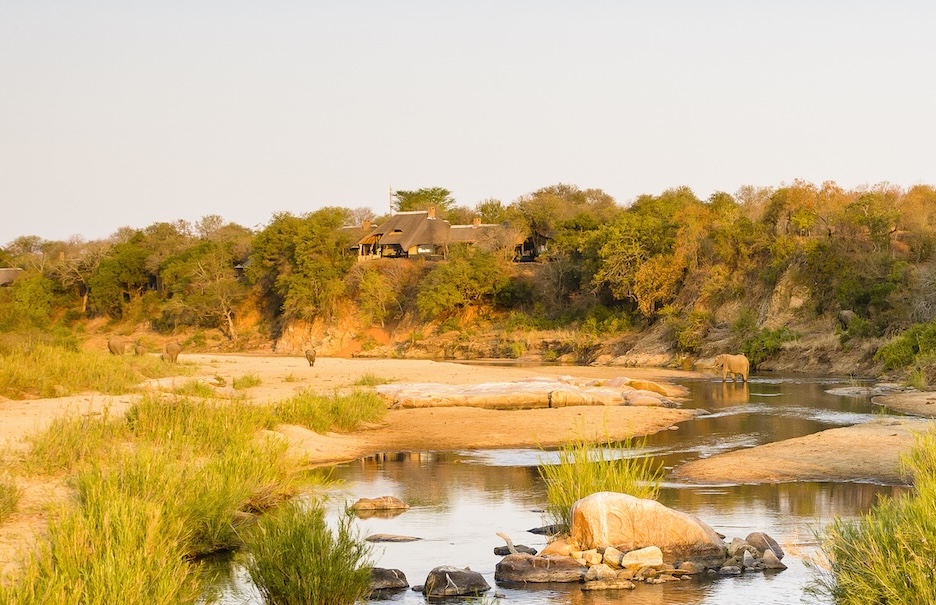
The size difference between the Kruger National Park and Sabi Sands is striking and incomparable:
- Kruger National Park covers nearly 19,485 km² (7,523 square miles), roughly the size of Wales and other small countries making it one of Africa’s largest game reserves. Because of its size, even extended visits may only cover a portion of the park.
- Sabi Sands Game Reserve is much smaller at about 65,000 hectares (160,600 acres), but it is subdivided into several private reserves such as Londolozi, MalaMala, and Sabi Sabi, each ranging between 5,000 and 15,000 hectares. This smaller size is ideal for first-time visitors or those seeking a safari experience over a few days, allowing for in-depth exploration without long drives between sightings.
Despite their size difference, the two areas connect seamlessly to form one large ecosystem, though access restrictions limit guests to their respective zones.
Game Drives in the Sabi Sands vs Kruger
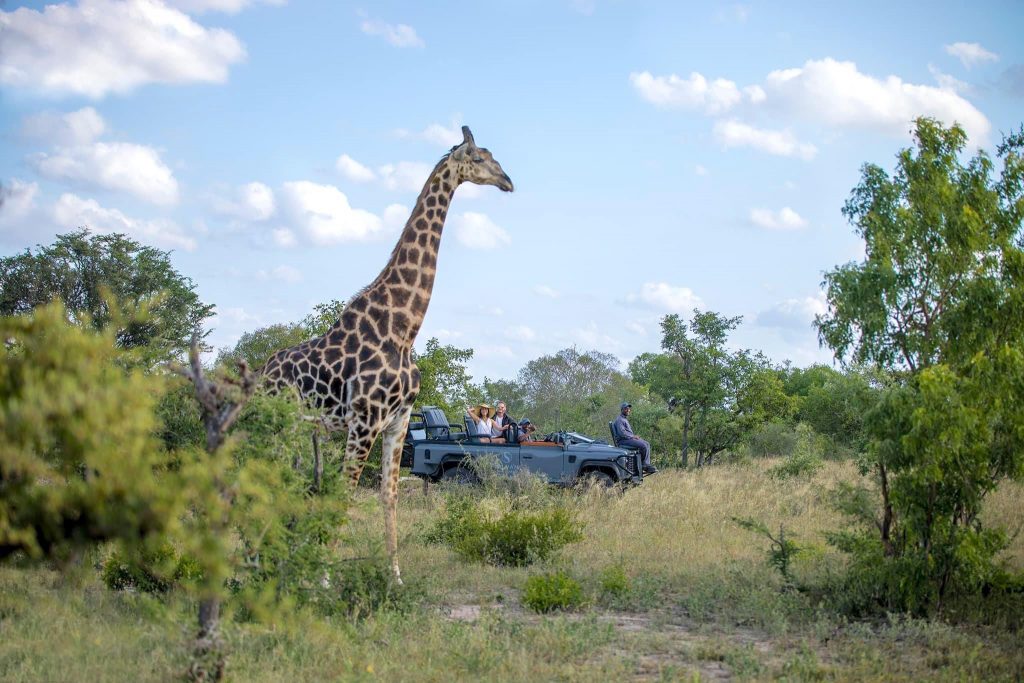
The style of safari particularly the game drives in each region is another major difference between the Kruger National Park and Sabi Sands Game Reserve:
- In Kruger National Park, many visitors opt for self-drive safaris in their own vehicles, using maps and apps to navigate a network of tarred and gravel roads. While this offers flexibility and is a more budget-friendly option, it also means that many vehicles follow the same routes and are restricted to staying on designated national roads, limiting the quality of sightings. Wildlife is often viewed from a distance, and popular sightings can become overcrowded, with multiple cars obstructing the view. This is largely due to the fact that there is no limit to the number of vehicles allowed at a single sighting within Kruger.
- In Sabi Sands Game Reserve, game drives are always led by expert trackers and guides in open 4×4 vehicles, with the freedom to go off-road allowing for intimate and extended wildlife encounters, particularly with the Big Five. These professionals are highly skilled in tracking animals and navigating challenging terrain to ensure exceptional close up sightings. Strict traverse and conservation rules limit the number of vehicles at any one sighting, helping to preserve the environment and create a quieter, more exclusive viewing experience. Night drives are another highlight, offering rare glimpses of nocturnal species, an activity only offered by a few specialised tour operators in Kruger.
The result? Wildlife sightings in Sabi Sands tend to be more frequent, higher quality, and more intimate, particularly for elusive animals like leopards.
Wildlife in Sabi Sands vs Kruger National Park
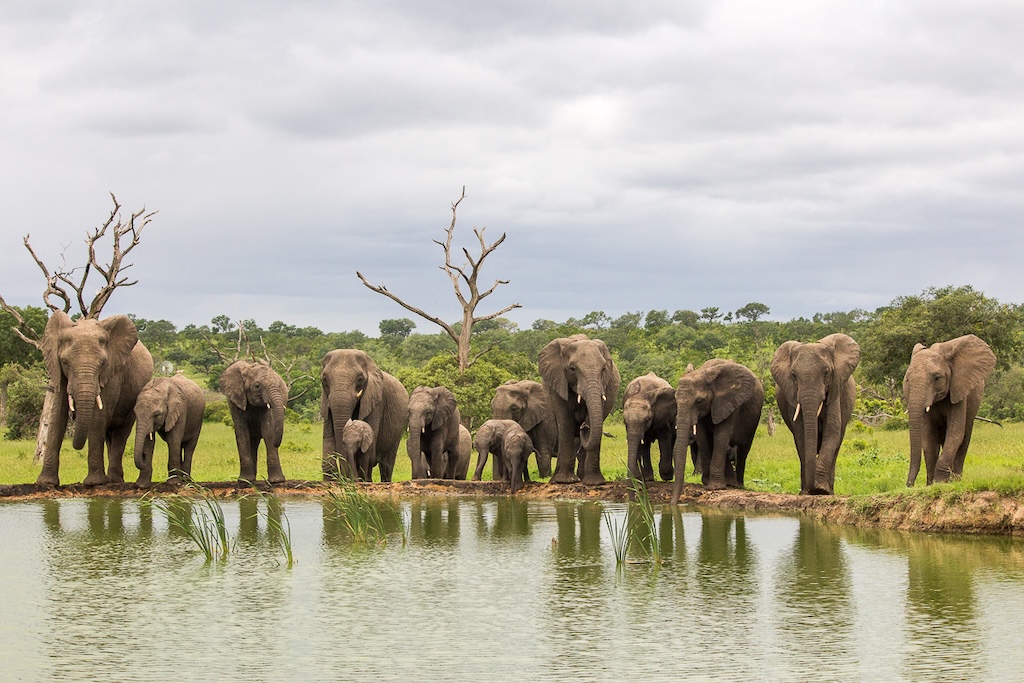
Kruger National Park is one of Africa’s most ecologically diverse protected areas, with its vast expanse of nearly 20,000 km² encompassing a wide range of habitats, from mopane woodlands and thornveld savannas to riverine forests and grasslands. This rich variety of ecosystems supports an impressive range of species, including:
- Over 500 bird species
- 147 mammal species
- 110 reptile species
- 34 amphibian species
- 45 fish species
Kruger’s size means that animal distribution varies significantly by region. For example, roan antelope, sable, and Lichtenstein’s hartebeest are mostly seen in the less-visited northern sections, while the southern and central areas are richer in predator density, especially lions and hyenas, due to higher prey availability and water sources. The park also supports rare and endangered species such as wild dogs, cheetahs, and ground hornbills.
Sabi Sands Game Reserve, although much smaller in scale, shares an unfenced border with Kruger and thus forms part of the Greater Kruger ecosystem, meaning wildlife can move freely between the two. While it doesn’t match Kruger in overall species count, Sabi Sands is world-renowned for its exceptional Big Five sightings, most notably leopards. The Sabi Sands is considered one of the best places on Earth to view leopards in the wild, with sightings often occurring daily. This extraordinary visibility is largely due to multi-generational habituation: leopards here have become accustomed to vehicles over decades, showing little concern for human presence.
Because of this, vehicles can often approach within just a few metres, allowing for exceptional photographic and observational opportunities, something rarely possible in many other reserves. The presence of expert trackers also means guests are far more likely to witness behaviours such as stalking, hunting, or interactions with cubs. Additionally, lion and hyena populations are healthy and often seen, with some prides and clans also habituated to vehicles.
While Kruger excels in biodiversity and showcases a broader ecological picture, Sabi Sands delivers quality over quantity, offering highly rewarding wildlife encounters in a much shorter time span, ideal for those with limited days on safari.
Landscapes and Unique Features
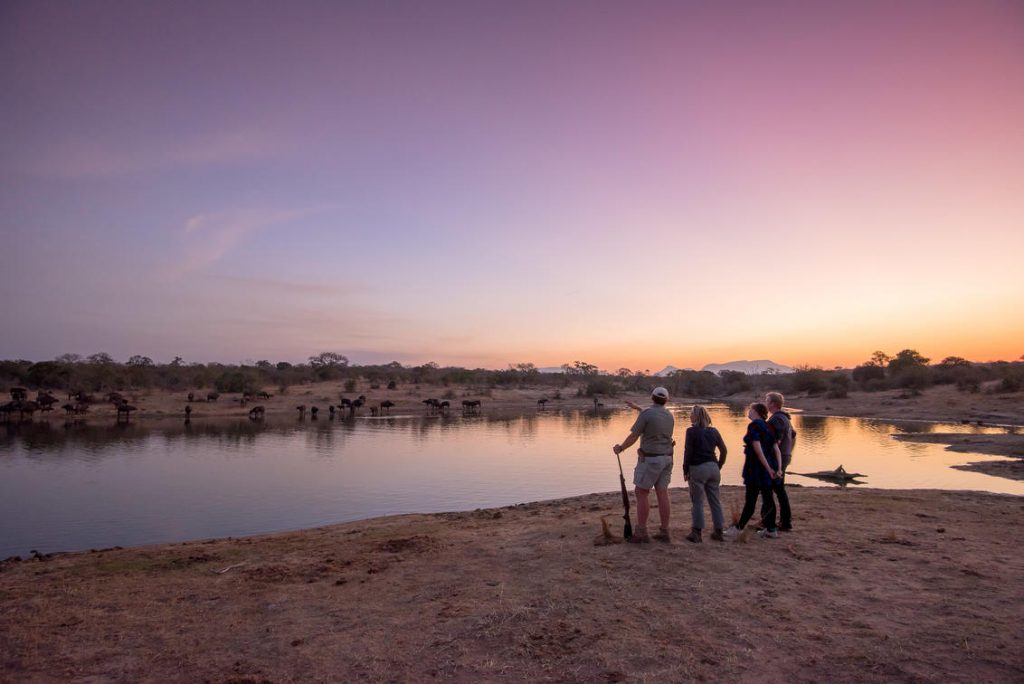
- Kruger National Park spans a vast and ecologically diverse region, with landscapes shaped by prominent rivers such as the Olifants, Letaba, Sabie, and Crocodile Rivers, along with the Lebombo Mountains along its eastern boundary. The park features four major vegetation zones that transition from mopane woodlands in the north to mixed bushwillow woodlands and thornveld in the central regions, and finally to savanna grasslands and acacia thickets in the south and west. These varying biomes form distinct ecological zones that support a wide array of wildlife species adapted to each habitat. The northern region, being more arid, is home to species like roan antelope and eland, while the southern areas, characterised by higher rainfall and perennial rivers, support dense vegetation and host large populations of elephants, lions, and herbivores. This remarkable diversity of topography, soil types, and flora contributes to Kruger’s status as one of the most biodiverse parks in Africa, boasting more than 2,000 plant species and a rich variety of fauna.
- Sabi Sands Game Reserve, in contrast, though much smaller and more uniform in terrain, is characterised by its two perennial rivers, the Sabie and Sand Rivers, which flow even in the dry season. These reliable water sources attract large concentrations of animals year-round, particularly during winter when water is scarcer elsewhere. The landscape here includes dense riverine forests, open savanna woodlands, and acacia-dominated grasslands, providing an ideal environment for the Big Five game, especially for leopards, which thrive in this mix of cover and visibility.
While Kruger offers broader ecosystem variation, Sabi Sands’ water-rich and predator-friendly habitat results in exceptionally consistent wildlife sightings, even during short stays. Together, these reserves showcase the diversity of South Africa’s natural environments, each with unique geographical features that shape the safari experience in different but complementary ways.
Accommodation Options
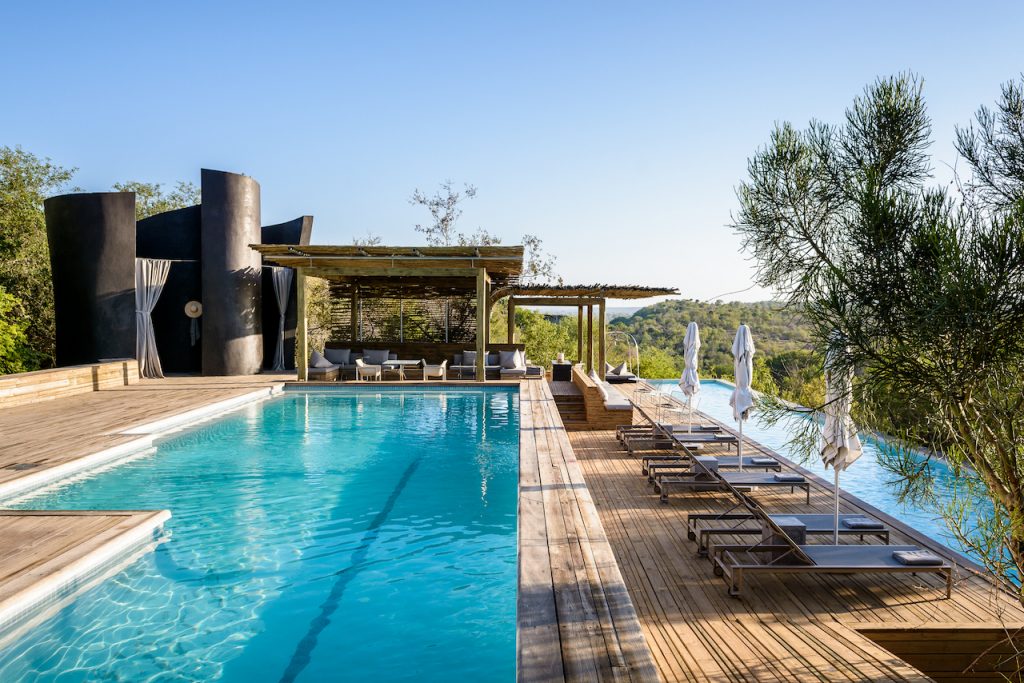
- Sabi Sands Game Reserve is known for its ultra-luxury safari lodges, often set in prime locations along riverbanks or near waterholes, offering breathtaking views. Many lodges are designed to blend seamlessly with the environment, allowing guests to enjoy wildlife sightings, sometimes including the Big Five, right from the lodge and accommdoation. These lodges offer personalised service, gourmet cuisine, swimming pools, spas, and special touches like private dinners under the stars in a traditional African Boma. Accommodations range from intimate, adult-only lodges to family-friendly options, with service, attention to detail, and hospitality consistently ranking as highlights of a Sabi Sands stay.
- Kruger National Park offers a wide range of accommodations, from budget-friendly campsites and self-catering options to mid-range rest camps. Staying inside Kruger National Park at one of the official SANParks rest camps is a great option for self-drive visitors. These camps provide basic but comfortable accommodation and direct access to the park’s roads and wildlife. It’s an affordable choice with various options, including huts, bungalows, and camping. For those seeking luxury, the Greater Kruger area includes private reserves with exclusive lodges comparable to Sabi Sands, such as Singita Lebombo Lodge and Royal Malewane.
Overall the Kruger accommodates all budgets but lacks the intimate exclusivity of Sabi Sands’ private lodges.
Pricing
The exclusivity and luxury of Sabi Sands come at a premium, it is significantly more expensive than staying inside the Kruger National Park, which offers a broad range of affordable options for travellers on a budget or those looking for a self-drive adventure.
For travelers seeking a luxury safari with high-end services and more personalized wildlife encounters, Sabi Sands is the premier choice. For those wanting a classic, diverse, and more economical safari experience with the option to explore vast wilderness areas on their own schedule, Kruger offers unbeatable value.
Comparing Sabi Sands with the Greater Kruger Private Reserves
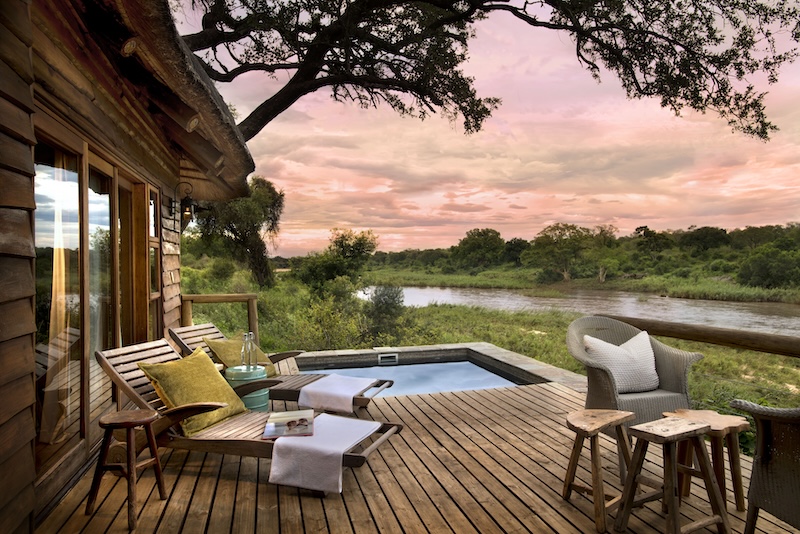
Within the Greater Kruger region, a collection of private reserves such as Timbavati and Thornybush Game Reserves offer safari experiences similar to the Sabi Sands Game Reserve, with:
- Open-roof vehicles and off-road driving with close up wildlife sightings
- Night game drives, walking safaris, traditional open-air Boma dinners
- Low vehicle-to-land ratios with strict traverse rules in place, resulting in uncrowded game drives
- Luxury lodges with modern facilities and various accommodation options
- All inclusive overnight stays including game drives, wildlife activities, accommodation meals and beverages.
These reserves provide a middle ground between the public Kruger National Park experience and the exclusivity of Sabi Sands Game Reserve, often at slightly more affordable prices than Sabi Sands itself.
Conclusion
Sabi Sands Game Reserve is regarded as South Africa’s best safari destination and outranks the Kruger National Park for overall experience due to its collection of exceptional 5-star lodges, ultra-luxurious accommodation offerings, and uncrowded, off-road game drives in exclusive traverse areas.
Kruger National Park remains an iconic and diverse wilderness offering something for every traveller. It is perfect for those with more time to explore vast landscapes, who enjoy self-drive adventures or seek budget-friendly options.
For a similar luxury experience to Sabi Sands, but at a potentially lower cost, consider the private reserves within the Greater Kruger region.
Useful information
If you are planning a trip to the Kruger or Sabi Sands Game Reserve, we recommend using readings these guides to find the best places to stay:
- Top Luxury Lodges in the Kruger National Park
- Best Family Safari Lodges in the Kruger National Park
- Top Luxury Lodges in the Sabi Sands Game Reserve
- Best Family Safari Lodges in the Sabi Sand Game Resevre
Safaris Down South is a globally accredited and trusted safari agency specialising in safaris in South Africa, for personal planning assistance and advice contact out team.
